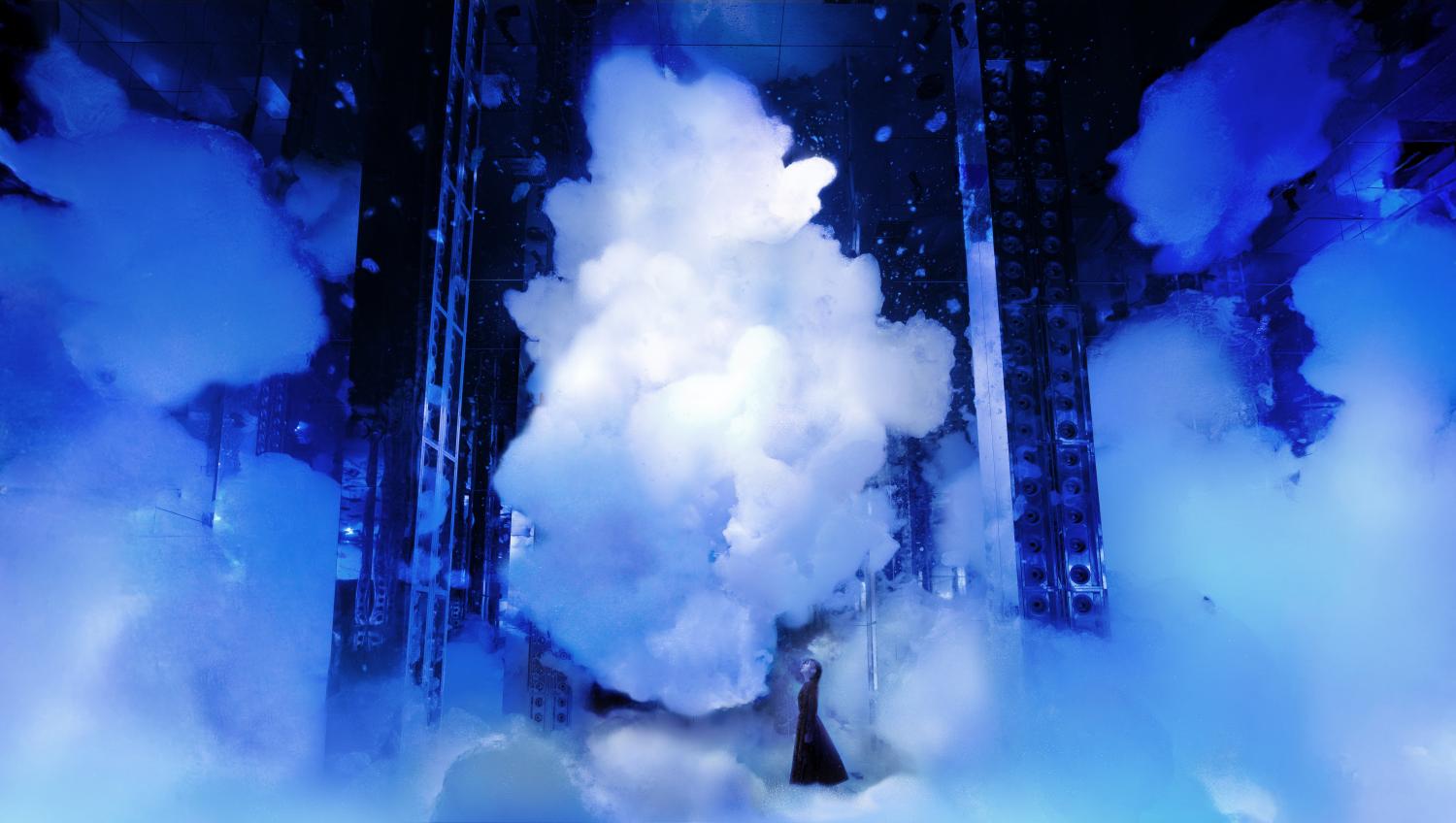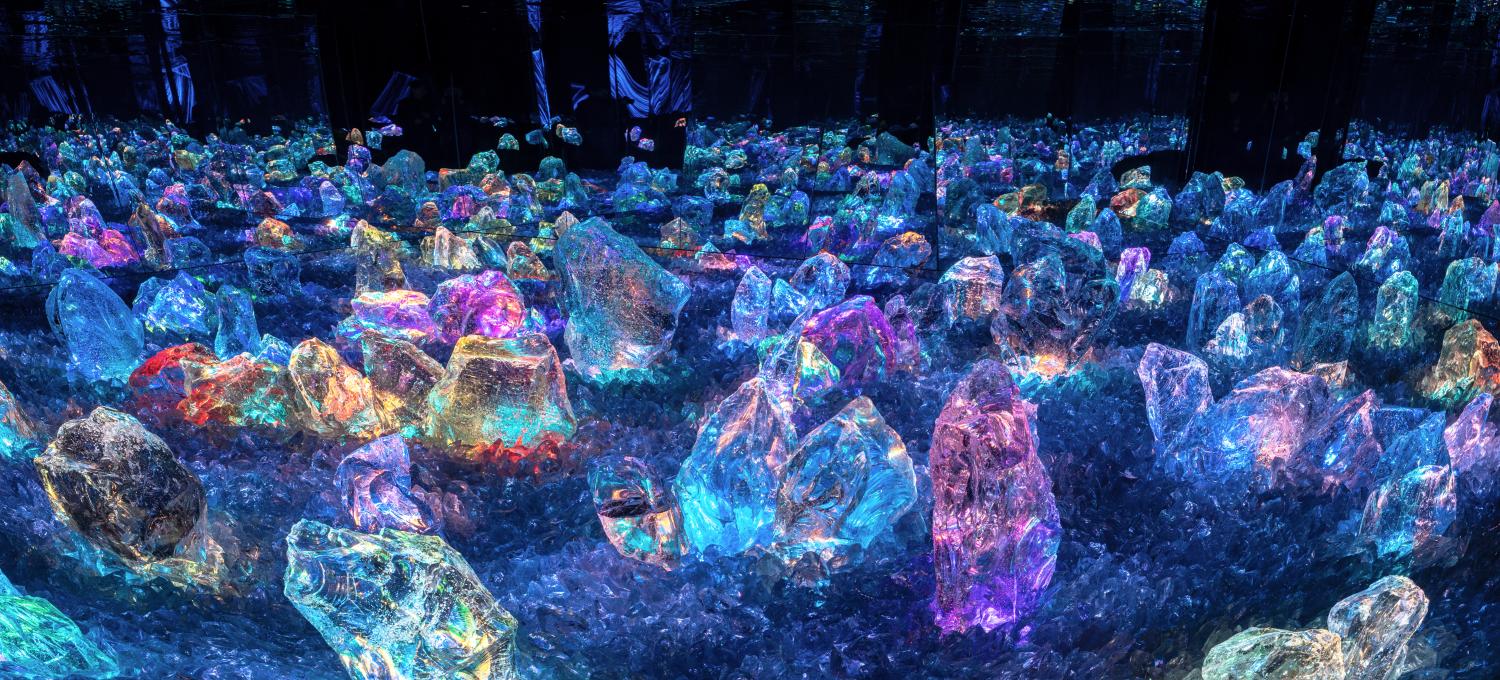A new art hub has opened in Japan’s ancient capital. The latest and largest permanent museum by the acclaimed Japanese art collective teamLab has officially opened its doors in Minami-ku, Kyoto, just a short walk from Kyoto Station’s Hachijo East Gate.
Spanning more than 10,000m², teamLab Biovortex Kyoto transforms digital art into a living, breathing ecosystem of light, sound and movement.

teamLab Biovortex Kyoto.
The recent opening marks a major milestone in teamLab’s ongoing dialogue between innovation, art and ecology. Special thanks go to Live Nation and AirAsia X who invited Life on this visit to teamLab Biovortex Kyoto. Their support in connecting art and travel culture und…
A new art hub has opened in Japan’s ancient capital. The latest and largest permanent museum by the acclaimed Japanese art collective teamLab has officially opened its doors in Minami-ku, Kyoto, just a short walk from Kyoto Station’s Hachijo East Gate.
Spanning more than 10,000m², teamLab Biovortex Kyoto transforms digital art into a living, breathing ecosystem of light, sound and movement.

teamLab Biovortex Kyoto.
The recent opening marks a major milestone in teamLab’s ongoing dialogue between innovation, art and ecology. Special thanks go to Live Nation and AirAsia X who invited Life on this visit to teamLab Biovortex Kyoto. Their support in connecting art and travel culture underscores a growing partnership between creative technology and global experience.
Located at 21-5 Higashikujo Higashi-Iwamotocho in Minami-ku, the new museum anchors Kyoto’s Station Southeast Area Project, part of the city’s urban revitalisation plan. Biovortex Kyoto is now the largest permanent museum teamLab has ever built in Japan. Inside, a labyrinthine and multi-level space has been designed not just to display art, but to physically engage visitors, encouraging them to move, touch and experience the artworks as if they were alive.
From the first step inside, it is clear this is no passive museum. The visitor does not simply observe – they participate. Digital projections crawl across the walls, react to movement and dissolve into space.

Digitized Nature.
“The core of the concept here at teamLab Biovortex Kyoto is unity and teamwork,” explained one of the on-site guides during our tour.
“Most of the art here is created by specialists from different disciplines: mathematicians, architects, engineers, programmers and designers. We bring them together as one organism. Unlike the solitary artists of history – Van Gogh and Picasso – teamLab works collectively. Hundreds of members create together. That’s what makes this place alive.”
That idea of collective creation – humans collaborating not only with one another but with technology and environment – defines the museum’s curatorial vision. Art here is neither static nor self-contained; it forms and reforms through perception, time and the viewer’s physical presence.
Visitors progress through a sequence of immersive zones, each with its own theme and emotional tone. Boundaries dissolve and rooms bleed into one another through light, vapour and sound.
Massless Amorphous Sculpture
One of the museum’s centrepieces, Massless Amorphous Sculpture, appears in Japan for the first time. It consists of a floating formation made only of soap, water and air. The translucent body hovers mysteriously – neither sinking nor rising fully – suspended between gravity and weightlessness. It drifts according to air currents, responding subtly to movement in the room. The effect is at once fragile and monumental, evoking the impossible equilibrium between matter and void.

Massless Amorphous Sculpture.
Then, we passed into a dim chamber where the floor seemed to ripple like a liquid planet. The work, titled Transient Abstract Life And Return, turns the visitor’s motion into part of its organic process. Our guide explained: “This liquid looks like mud, but it has its own water and order. When we draw shapes on the floor, they slowly come back together. Even if order is broken, the forms reunite, like life trying to restore itself.”
Here, the experience borders on the meditative. The artwork dissolves distinctions between destruction and regeneration – what breaks also heals. Presence and impermanence coexist in the same luminous moment.
Morphing Continuum
Elsewhere, hundreds of glowing orbs float in a vast chamber, breathing as one. Their brightness and rhythm shift like a collective organism. The accompanying text reads: “Even if individual elements are separated in space and time, when structural order appears among them, the elements transcend both space and time and form a single entity. This spatiotemporal existence is part of the whole – it is a living universe, a biocosmos.”

Morphing Continuum.
Standing inside, the visitor senses not an installation but a universe unfolding – a field of energy linking micro and macro, self and collective. Every slight movement sends ripples of light through the room, as though consciousness itself has entered the circuitry.
Sea Of Solidified Light
This is a stone-garden of suspended, multi-hued forms that look like glass and like condensed light. The installation resists simple colour naming; hues overlap and coexist so that no single tone can be pinned down. As our guide explained: “We have included some lights inside them. You can see that they have multiple colours within them. As it has multiple colours at the same time, so you can’t really name the colour on each stone. You can’t say whether it’s blue or purple, red or green. And, you know, multiple colours are living at the same time, so it’s quite difficult to identify it. We have included that concept with these glass stones and try to make a stone garden. It’s a very Kyoto thing.”
Walking through the work, visitors find that light acquires the weight and quietude of natural rock – simultaneously delicate and immovable – inviting slow looking and private reflection.
Digitized Nature
One of teamLab’s most poetic and recurring concepts, Digitized Nature, also finds new resonance here.
“This isn’t real nature – it’s artificial,” the guide said as we entered a landscape of light that mimics forests and rivers. “We want to show nature through digital technology, because not everyone can easily go deep into a forest. Using non-material tools like light and sound, we can express nature without harming it.

Sea Of Solidified Light.
“Maybe people in Thailand, for example, see more of real forests than people in Japan. But if someone never experiences it directly, it’s hard to understand how nature feels, how it breathes. Through these artworks, we hope to reveal that invisible cycle – the circle of life inside the forest.”
The space pulses with colour and mist; walls dissolve into slow-moving waves of light that sense human proximity. It’s an illusion of wilderness, yet paradoxically more intimate than any real one – because here, every footstep alters the ecosystem. You become part of the environment’s code.
Athletics Forest: When Art Demands The Body
Beyond the immersive installations lies Athletics Forest, teamLab’s signature educational and physical experience. Described as a “multi-dimensional creative athletic space”, it invites visitors to navigate art with their entire bodies – climbing, balancing, sliding, jumping.
“Humans perceive and think with their bodies,” our guide explained. “In modern life, we interact mostly through flat information – books, TV, smartphone screens. So we created a three-dimensional space that demands physical movement. It’s a way for people, especially children, to develop higher-dimensional thinking through play.”
The environment itself feels like a digital playground from another planet: glowing slopes, shifting platforms, spheres that light up upon touch, mirrored chambers that distort perspective. Every element reacts to human presence, merging physical exertion with cognitive play. Here, the visitor’s balance, speed and coordination become instruments of artistic creation.
Other remarkable pieces punctuate the museum’s interior. The Way Of Birds transforms the flight of hundreds of thousands of digital birds into one vast life-form that whirls around the viewer. Forest Of Resonating Lamps: One Stroke – A Year In The Mountains arranges countless glass lanterns that glow and fade in rhythmic dialogue, a metaphor for the passing of seasons. The Eternal Universe Of Words writes calligraphy in infinite space, each character appearing and vanishing like breath. Traces Of Life turns footsteps into glowing trails – reminders that the art exists only while you do.
Each work reaffirms teamLab’s pursuit of interconnectedness. The collective’s art dissolves distinctions between the self and environment, between art and architecture, between body and data.
As our guide summarised towards the end of the tour: “All things exist in continuity. Light, sound, air, people – everything is connected and changing. teamLab Biovortex is not a collection of pieces. It’s one continuous organism.”
teamLab Biovortex Kyoto is open daily from 9am to 9pm (last admission 7pm; hours subject to change). Entry is via timed tickets with variable pricing. As of this writing, adult ticket prices vary depending on demand, while youth tickets (ages 13–17) are fixed at ¥2,800 (about 590 baht). Children’s tickets (ages 4–12) cost ¥1,800, and admission is free for children aged three and under. Visitors with disabilities receive a 50% discount on the adult fare.